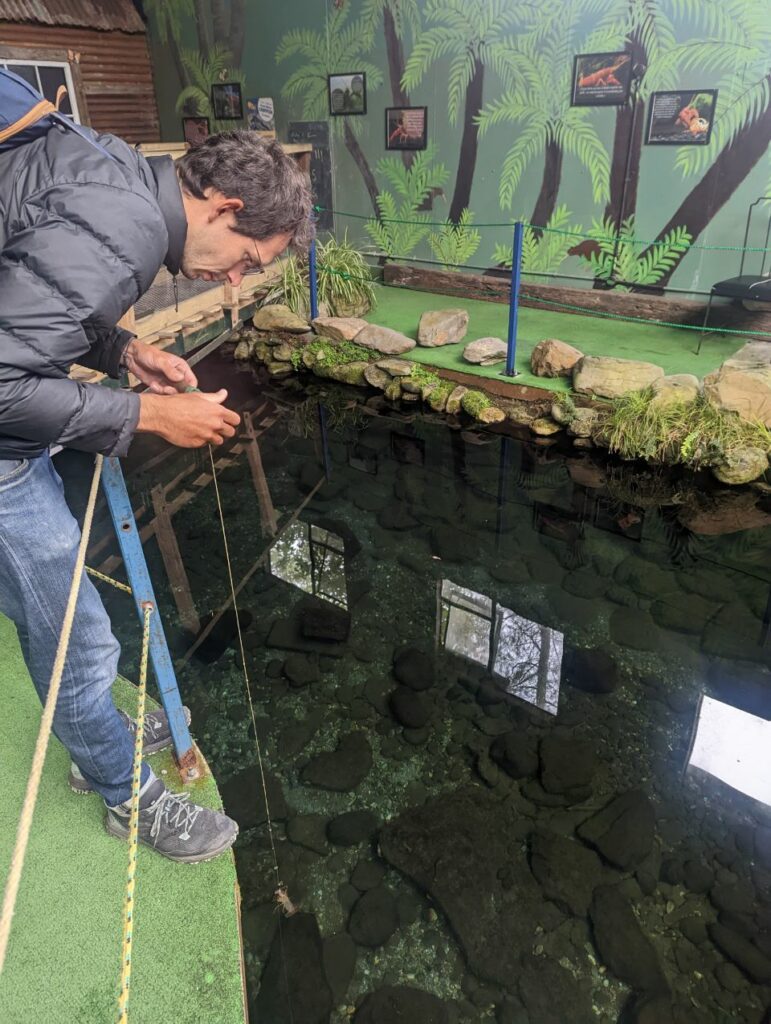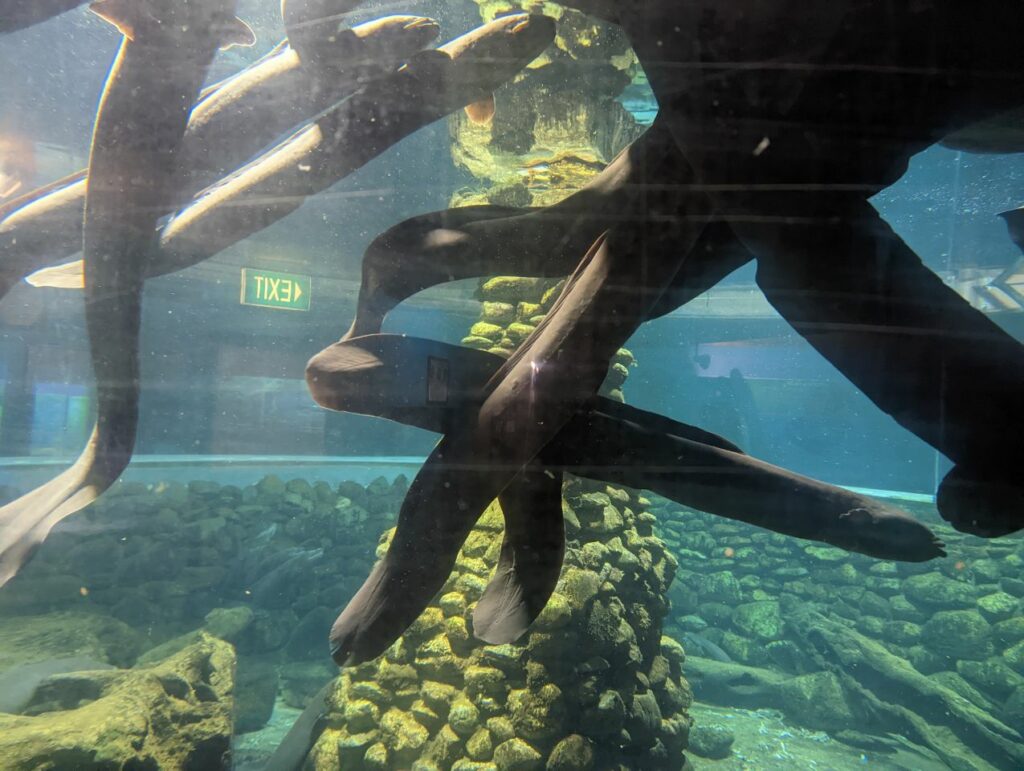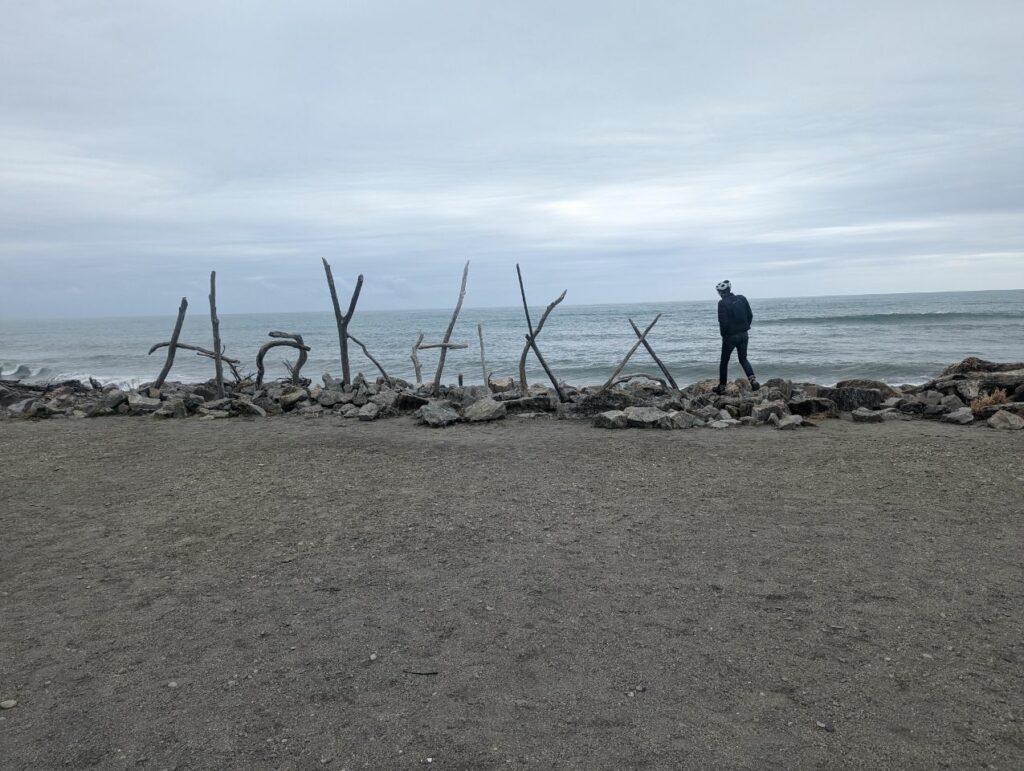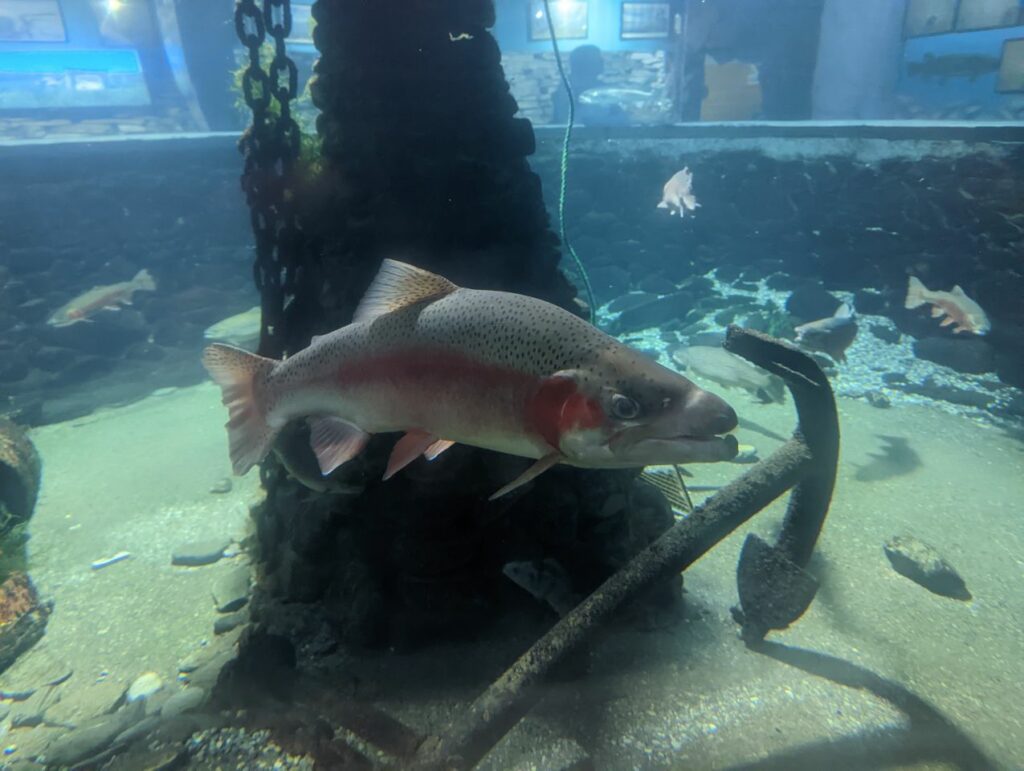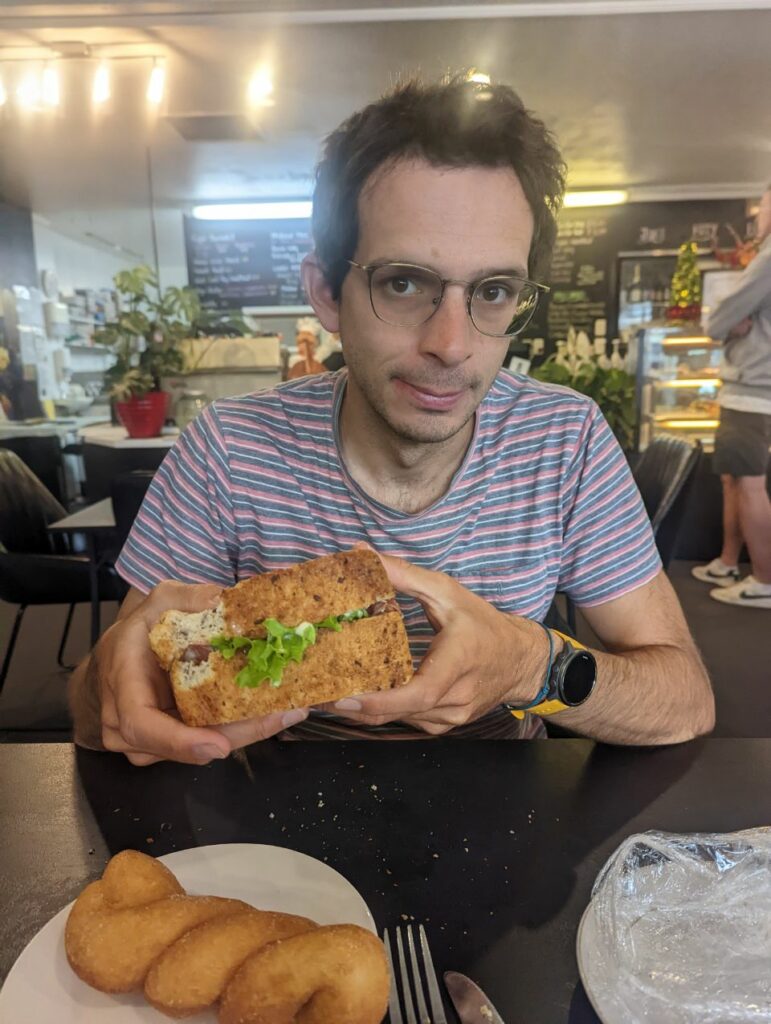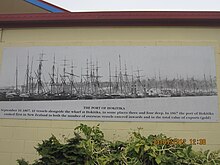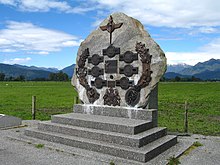Petite journée off aujourd’hui
Visite de Hotikita, sa plage, ses cafés et surtout ses nombreuses galleries
On est aussi passé dans un aquarium où on a vu des anguilles et des kiwis
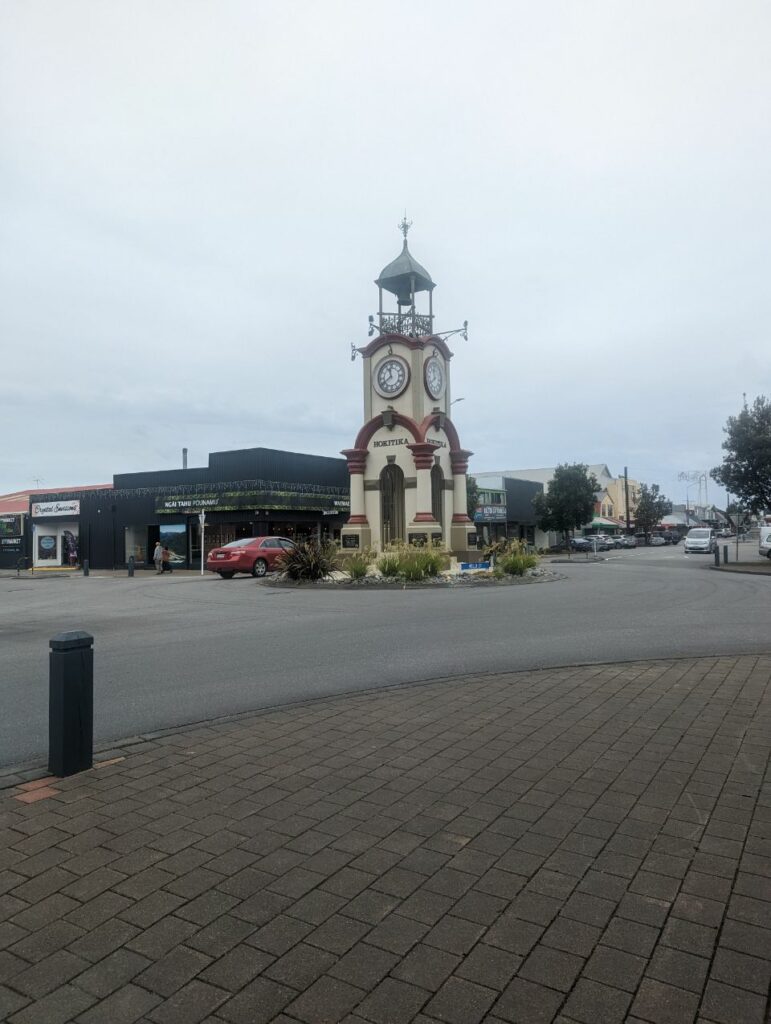
HOKITIKA
8th Decembre 2022
Hokitika is a town in the West Coast region of New Zealand’s South Island, 40 kilometres (25 mi) south of Greymouth, and close to the mouth of the Hokitika River. It is the seat and largest town in the Westland District. The town’s estimated population is 2,860 as of June 2022.[1]
On a clear day Aoraki / Mount Cook can clearly be seen from Hokitika’s main street.
Toponymy
The name Hokitika translates from Māori as « to return directly » (from hoki, ‘to return’, and tika, ‘direct’). According to the Ministry for Culture and Heritage, the name comes from when a band of Ngāi Tahu warriors in search of greenstone were about to attack Ngāti Wairangi pā. The chief of the invaders drowned while trying to cross the Hokitika River, and the leaderless taua (army) then returned directly to their own home.[2]
History
The land where Hokitika stands was purchased in 1860 from Māori when Poutini Ngāi Tahu chiefs signed the Arahura Deed. This was the sale of the whole of the West Coast region, apart from small areas reserved for Māori. It was almost 3 million hectares and sold to the Crown for £300.[3][4][5]
Founded on gold mining in 1864, it was a centre of the West Coast Gold Rush and grew very quickly.[3] Members of the Jewish community ran stores and businesses and built a synagogue in Tancred St.[6] One of them, John Lazar, was appointed Town Clerk in 1866 and was a prominent Freemason.[6][7]
By late 1866, it was one of New Zealand’s most populous centres. On 16 September 1867, there were 41 vessels alongside the wharf at Hokitika, in some places three and four deep. In 1867, the port of Hokitika ranked first in New Zealand in both the number of vessels entered inwards and in the total value of exports; principally gold.
On 8 March 1868 a mock funeral was held in protest about the conviction and hanging of three Irish Fenians in Manchester – the Manchester Martyrs. The funeral was led by Roman Catholic Father William Larkin and a Celtic Cross was erected in the Hokitika Cemetery. Larkin was later arrested, charged, and convicted of riot and seditious libel.[8]
In 1873 Hokitika became the capital of the short-lived Westland Province which lasted from 1873 until the abolition of provinces in 1876.
In the early 20th century Hokitika had two hospitals, the Westland Hospital and the Seaview Asylum.[9]
In October 1941, three Hokitika police officers (and a policeman stationed in the neighbouring locality of Kaniere), along with a field instructor for the Canterbury education board, were killed when a local farmer, Stanley Graham, went on a shooting rampage and killed seven people, including two armed Home guard personnel.
In the ensuing manhunt, the biggest in New Zealand history, overseen by the Commissioner of Police, Denis Cummings, more than 100 New Zealand Police and several hundred New Zealand Army & Home Guard searched the area for the gunman for 12 days, with orders to shoot him on sight if found still armed. On 20 October, after being spotted by two police constables and a local civilian carrying his rifle and ammunition belts, Graham was fatally wounded by a police constable and died the next day.[10]
The population has declined greatly since that time but the population of the Westland District is now on the rise thanks to « lifestyle inhabitants ». Almost 30% of the district’s rate-payers live outside of Hokitika.

